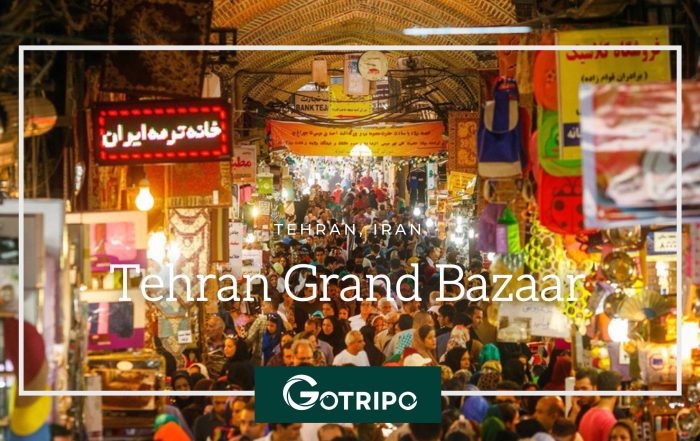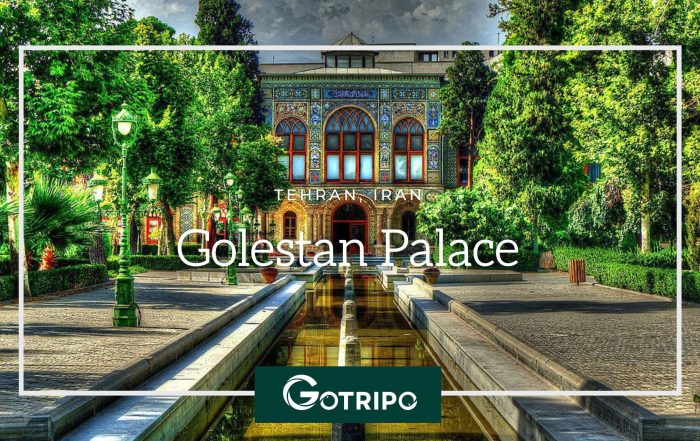Niavaran Palace in Tehran
Located in the peaceful northern district of Tehran, Niavaran Palace is a shimmering emblem of Iran’s royal past. Often overshadowed by the more internationally recognized Golestan Palace, Niavaran offers visitors a rare chance to step into the intimate world of the Pahlavi family. Draped in Persian artistry, modern elegance, and political echoes, this palace is much more than a museum—it’s a living memory.
Niavaran Palace Historical-Cultural Complex in Tehran
The grandeur of Niavaran Palace lies not only in its aesthetics but also in its layered significance. Originally a retreat for royalty during the Qajar dynasty, it evolved under Mohammad Reza Shah Pahlavi into a modern complex with distinct architectural character. The lush Niavaran district serves as a perfect backdrop for this tranquil, yet historically charged, destination.
Today, Niavaran Palace is more than just a museum—it’s a living archive of Iran’s royal narrative. It reminds visitors that history is not always behind glass—it breathes, echoes, and endures through walls like these.
If you’re visiting Tehran and want to experience a place where Iran’s past and present meet, Niavaran Palace is simply unmissable.
The Royal Connection
Niavaran Palace was more than a symbol of opulence—it was home. The Pahlavi royal family lived here until the 1979 Iranian Revolution. Walking through its hallways, one can almost hear echoes of diplomatic meetings, quiet family moments, and grand celebrations. It reflects both the public persona and private lives of Iran’s last monarchs.
Niavaran Palace History
Nestled in the upscale northern neighborhood of Tehran, Niavaran Palace stands as a graceful reminder of Iran’s regal past. The story of this palace isn’t just about marble floors and gilded ceilings—it’s a journey through time, power, art, and change.
-
From Qajar Gardens to Royal Grounds
Before it became a royal residence, the land where Niavaran Palace sits today was part of a vast and scenic garden used during the Qajar Dynasty (1789–1925). Known for its natural beauty and cooler climate, Niavaran served as a seasonal escape for Qajar kings, particularly in the hot summer months.
During the rule of Fath-Ali Shah Qajar, a small palace was built here, and later Naser al-Din Shah expanded the estate by commissioning the construction of the Sahebqaraniyeh Palace, a stunning Qajar-era structure that still stands within the complex today.
-
The Pahlavi Era: Modern Meets Tradition
Fast forward to the 1960s, when Mohammad Reza Shah Pahlavi, the last monarch of Iran, decided to build a modern palace that would befit the lifestyle of a modern royal family while respecting Iran’s artistic heritage.
In 1968, the main building of Niavaran Palace was completed. It was designed by Iranian architect Mohsen Foroughi and became the residence of the Shah and his family. The palace was a blend of modern design with traditional Persian elements—its retractable roof, sleek European furniture, and Persian rugs created a fascinating contrast of East and West.
This palace wasn’t just for show—it was where the royal family lived, celebrated, made state decisions, and entertained global dignitaries. It reflected the grandeur of the monarchy at its peak, as well as the Shah’s desire to present Iran as a modernized yet culturally rich nation.
-
Revolution and Repurposing
Everything changed in 1979, with the Iranian Revolution. The monarchy was overthrown, and the Pahlavi family fled the country. Like many symbols of royal power, Niavaran Palace was seized and closed to the public for a time.
But rather than falling into disuse, the palace was carefully preserved and eventually reopened as a museum. Today, it offers visitors a chance to see how the royal family lived—down to their bookshelves, personal photos, and even wardrobes left behind.
-
Layers of Iranian History
What makes Niavaran Palace so compelling is the way it holds layers of Iran’s history—from the opulence of the Qajars to the ambition of the Pahlavis, and finally to its current role as a cultural and historical site open to all.
Its halls, artwork, and architecture whisper stories of diplomacy, luxury, and transition. You walk not just through rooms, but through time.
Architectural Brilliance of Niavaran Palace
Blending Persian aesthetics with postmodern European styles, the design of Niavaran Palace stands as a testimony to international influence harmonized with local tradition. Architect Mohsen Foroughi ensured that modernity would never overpower cultural roots. Notably, the palace has a retractable roof—a marvel even by today’s standards.
Before the main palace’s construction in the 20th century, the site held Qajar-era buildings. These earlier structures were incorporated into the larger Niavaran Complex, which today consists of several distinct buildings: Niavaran Main Palace, Ahmad Shahi Pavilion, Sahebqaraniyeh Palace, and Jahan Nama Museum.
The Heart of the Palace: Niavaran Main Palace
This is where it all converges—glittering chandeliers, European-imported furniture, and traditional Persian textiles blend into a surreal sensory experience. The main palace was built in 1968 and served as the daily residence of the royal family. Look closely, and you’ll notice books, art, and even family photos still resting in place.
Read more: Where Is the Tomb of Hafez?
Sahebqaraniyeh Palace: A Timeless Icon
Built during the reign of Naser al-Din Shah Qajar, this section is perhaps the most historically dense. It was here that important treaties were signed, and reforms initiated. Today, it functions as both a historical exhibit and a timeline of Iran’s monarchical politics.
Ahmad Shahi Pavilion: A Hidden Gem
Quaint yet majestic, this pavilion was initially built for Ahmad Shah Qajar. Surrounded by centuries-old trees and serene gardens, it exudes quiet authority. The building underwent renovations during the Pahlavi era and now showcases royal heirlooms and personal effects.
Jahan Nama Museum
For art lovers, this museum is a surprise package. It houses items collected by Queen Farah Diba from around the globe—works by Picasso, Salvador Dalí, and Iranian modernists sit side by side, offering a multicultural visual journey.
Library of Niavaran Palace
A book lover’s haven, this stunning circular structure is home to over 23,000 volumes—some of them rare manuscripts. Designed with both function and beauty in mind, the space includes reading rooms, spiral staircases, and Persian calligraphy.
Green Space and Persian Gardens
The palace is surrounded by a vast Persian-style garden. With fountains, stone paths, and centuries-old trees, it is ideal for peaceful walks. The landscaping reflects traditional Iranian aesthetics of harmony and paradise.

Read more about Tehran Milad Tower
Cultural Events at Niavaran
Today, the palace isn’t just a museum—it’s a cultural hub. Art exhibitions, Iranian music concerts, and calligraphy workshops are often held here, making it a living part of Tehran’s vibrant cultural scene.
Transition from Royal Residence to Public Heritage
Following the revolution, Niavaran Palace was turned into a museum. Thanks to careful preservation efforts, much of its original charm remains intact. It’s now a symbol of Iran’s ability to embrace both past and present.
Niavaran Palace in Iranian Cinema
Filmmakers often choose this location for its cinematic appeal. Its intricate decor, reflective marble floors, and lavish chandeliers have appeared in numerous historical and dramatic films.
Photography at Niavaran Palace
Photography is allowed in most areas, but flash photography is typically restricted. The lighting, both natural and architectural, provides stunning opportunities for both amateur and professional photographers.

Niavaran Palace for Families
Families will find the experience engaging for all age groups. From the lush gardens to the interactive exhibits in the museum, there’s plenty to explore. There’s even a small café and gift shop to enhance your visit.
Nearby Attractions in Northern Tehran
When you’re done exploring the palace, don’t miss out on nearby gems like Tajrish Bazaar, Darband hiking trail, and the Imamzadeh Saleh Shrine. Each offers a unique facet of Tehran’s personality.

Niavaran Palace Ticket Prices
Niavaran Palace is usually open from 9:00 AM to 5:00 PM, but it’s best to check the official website for holiday closures. Entry fees vary for local and international tourists, with discounts available for students.
| Visitor Type | Price (Approximate) |
|---|---|
| Iranian Citizens | 25,000 IRR – 50,000 IRR per section |
| Foreign Tourists | 500,000 IRR – 1,000,000 IRR per section |
🏛️ Note: The Niavaran Complex includes several parts—Niavaran Main Palace, Ahmad Shahi Pavilion, Sahebqaraniyeh Palace, Jahan Nama Museum, and the Library—and each may have a separate entrance fee.
How to Get to Niavaran Palace?
You can reach the palace via Tehran Metro (Tajrish Station) followed by a short taxi ride. Alternatively, bus and ride-hailing apps are convenient options. Signage and English-speaking guides are available at the site.
Best Time to Visit Niavaran Palace
Spring and autumn are ideal due to Tehran’s mild climate. During these seasons, the gardens are in full bloom, and the natural light enhances the palace’s architectural details.
Dress modestly, learn a few Persian greetings, and carry cash for entrance tickets. The staff is friendly and helpful, and English brochures are available. Remember: respect the heritage, and it will reward you.
FAQs About Niavaran Palace
Is Niavaran Palace open to the public?
Yes, it’s a museum complex open to both local and international visitors.
Can I take photos inside Niavaran Palace?
Yes, but flash is prohibited in certain areas to protect artworks.
How long should I plan to visit Niavaran Palace?
At least 2–3 hours to fully explore all buildings and gardens.
Is the Niavaran area safe for tourists?
Absolutely. Northern Tehran is known for being safe, clean, and tourist-friendly.
Are there guided tours available at the palace?
Yes, you can hire a guide or join group tours organized at the entrance.
What language is spoken by the staff?
Mostly Persian, but many staff members understand and speak basic English.
Conclusion
Niavaran Palace stands as a unique blend of elegance, history, and cultural relevance. It’s not just another tourist attraction; it’s a journey through the royal corridors of time, offering every visitor a piece of Iran’s rich tapestry. Whether you’re an architecture enthusiast, a history buff, or simply a traveler in search of something extraordinary, Niavaran Palace promises an experience you won’t forget.
news via inbox
Subscribe to receive the best offers, travel guides, and hot deals!











